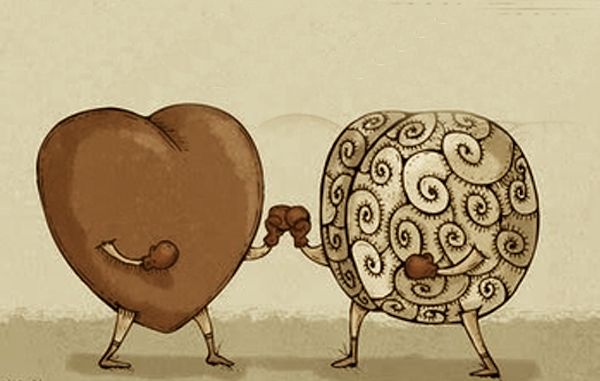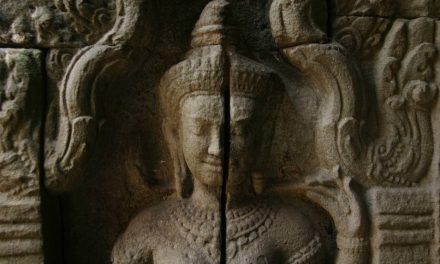By John Author
Greetings my beloved Reader! It’s John Author, or Pendall, or Liwa—whatever my name is, here again to spout random gibberish about stuff and things.
This is a continuation of the Anatta Series that Strib unintentionally began by talking about anatta’s relationship to impermanence.
Some Buddhists may disagree, but to me, Anatta and Sunyata (emptiness, void, etc.) are mostly synonymous.
In my experience, anatta is the “bringing it closer to home” term for sunyata. Emptiness isn’t a straight forward issue. I’ve broken it down into five different layers (or dimensions) that I like to focus on in meditation. I won’t go into that here, but if you’re interested, feel free to engage me in awkward conversation.
I touched on lineage in the last column, which kinda falls under a dimension of cause and effect through time. To wrap up that up and move on, I just have to add that: I am (I exist) because of everything that’s ever happened throughout the history of the universe.
My current existence depends on everything that has occurred up to this present moment. Right now I still depend on my ancestors screwing each other, and I depend on everything that they depended on to survive. This computer depends on everyone and everything that went into creating it.
Now that that sliver’s out of my paw, I can move onto another dimension of emptiness: composition.
I can’t really offer an accurate response if someone asks me, “Where are you?” Anything I point to and call “I or mine” is just a piece. These pieces are also pieces of pieces.
Also, those pieces are pieces of pieces of pieces. What I call “I-Me-Mine” is the connection between these pieces.
Connection is an intangible, formless, non-thing. I can’t point to something and say “that’s connection,” because it’s a process—an action or quality. Even though I can’t point to connection directly, we all intuitively know what it is.
It’s like how we all know what is is, but we can’t quite define it.
Anywho, if I look for “I,” I’m going to find solids, liquids, energy, gasses, space, and consciousness. I can’t call any of these things “I.” Not only can I not find a solid self in there anywhere, but I can also realize that these properties are communal property.
I don’t own solidity. Mountains, earth, wood, asphalt—all these things are solids, too. The same goes for liquidity. I don’t own liquidity; it’s also shared by the oceans, streams and morning dew.
The space in my mouth isn’t mine. Space is just space.
Even consciousness (that which knows) isn’t mine. What if I void consciousness of all the thoughts, feelings and memories that usually decorate it? When I do that, I can intuit that the quality of being aware of things is virtually identical among all sentient beings. Consciousness is just consciousness.
The emptiness of composition applies to everything that I’ve ever known—including knowing.
I was sitting on the back porch the other day, perched on the aging picnic table. I’ve been working on a book, so most of my days are spent furiously hammering away on this laptop. I took a breather and concentrated on the table for a few minutes. There was nothing in my mind other than the table. I became absorbed in the different characteristics that compose it. I saw each ridge in the wood as a whole—a totality. I became absorbed in a single inch of the table, a single centimeter, a millimeter; each piece complete, whole, and brilliant.
That table was empty of itself, devoid of itself, but it was full of so many things! Those things were also devoid of themselves, yet full of everything else. If I were a betting man, I’d bet that this goes on infinitely in both micro and macro directions.
The Dharma seems to operate using the Russian nesting doll principle.
While studying the Pali Canon, I realized that meditation and mindfulness aren’t the best terms for the techniques we use. Sati more closely resembles “Remembrance,” or, “Recollection,” rather than this weird mindfulness phenomenon.
Sati is remembering the Dharma, remembering Skillful View. Then this is combined with Samadhi—which is concentration, immersion or absorption.
I remembered Sunyata as I fixed my gaze on the picnic table. I focused and focused until there was no separation between the table and I. The “I” was absorbed into the experience.
Thich Nhat Hanh calls this penetration, but I’m not sure if he’s aware of how sexual that word is to us. Yet it’s as good a word as any.
So this is the composition aspect of anatta or Sunyata. Stay tuned dear Tattooees for Part Three of the series: The Quest for Bacon (working title).
Photo: (source)
Editor: Alicia Wozniak
Comments
- Bending Minds and Dogmatic Slumbers: Psychedelic Buddhism - April 1, 2024
- Political Animals: Should Buddhists Be Openly Political? - March 7, 2024
- Why Is Buddhism So Messy? - January 17, 2024






